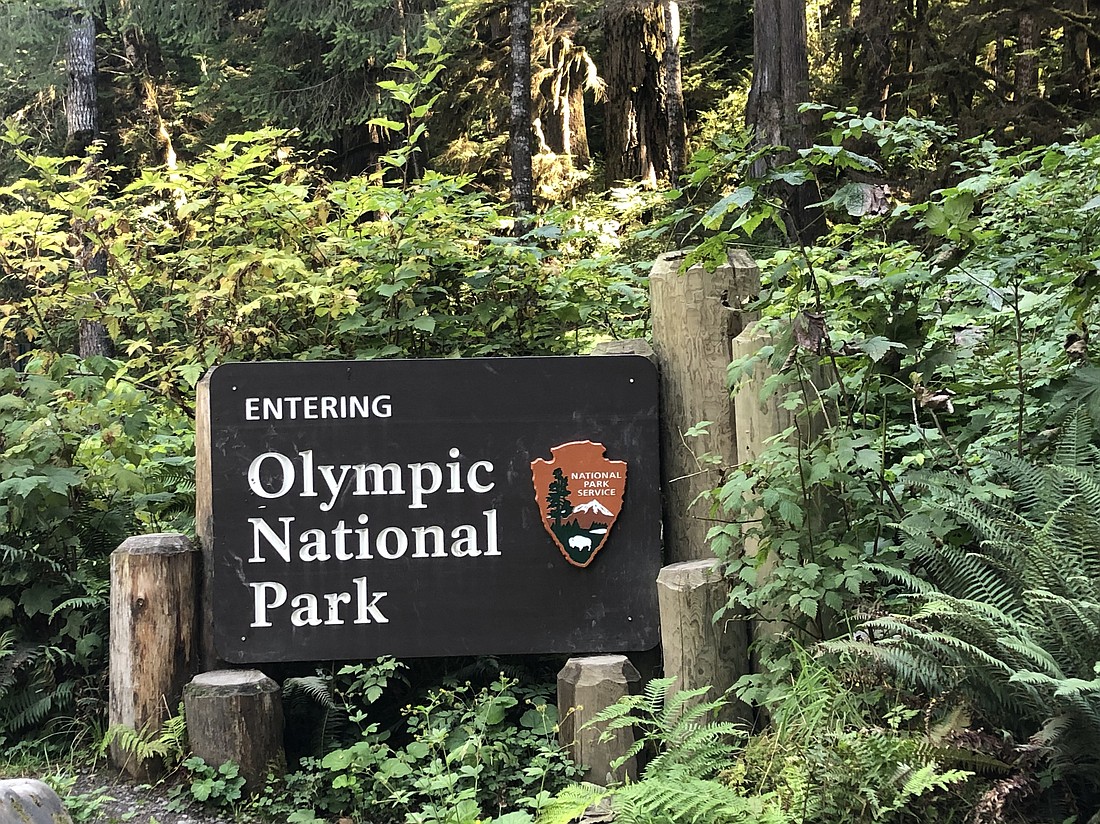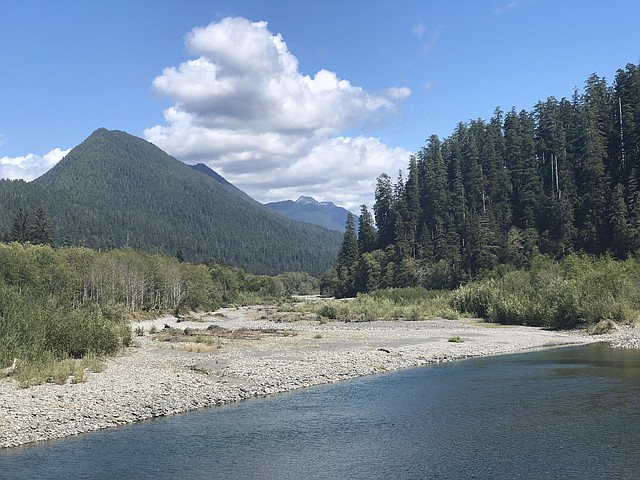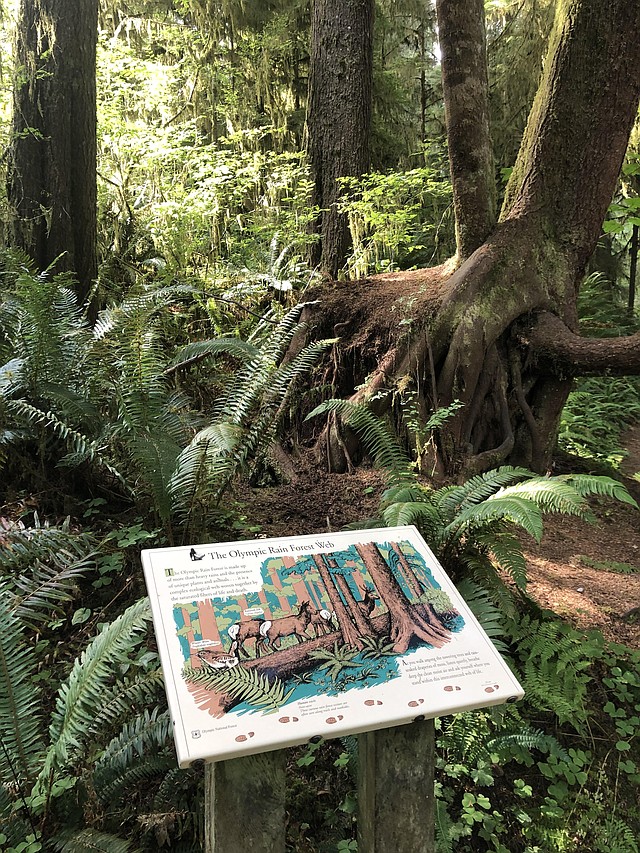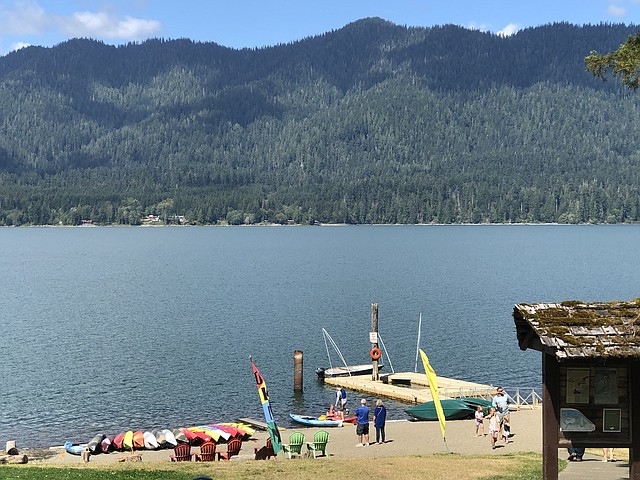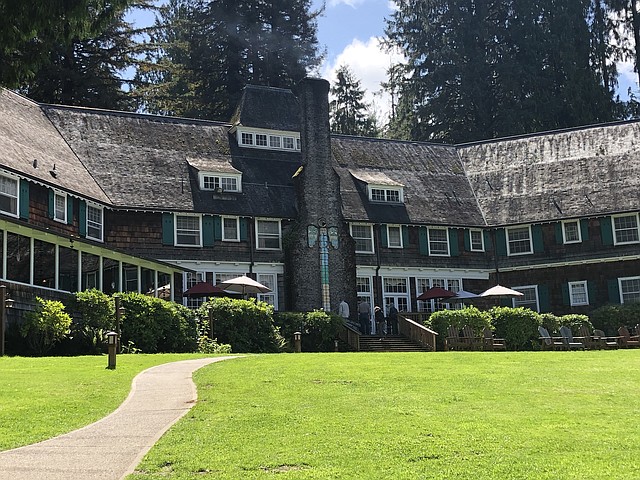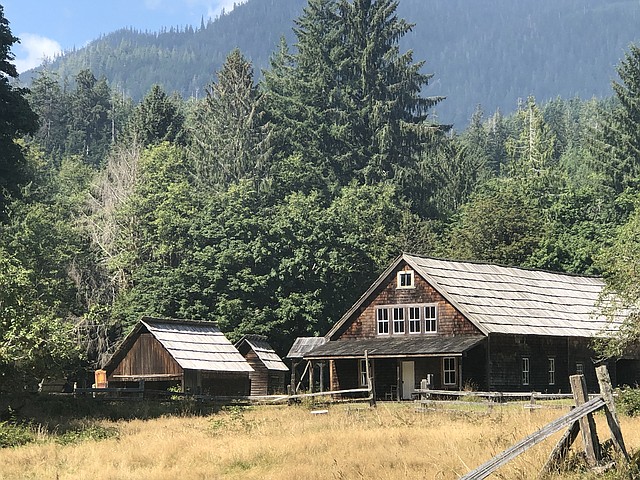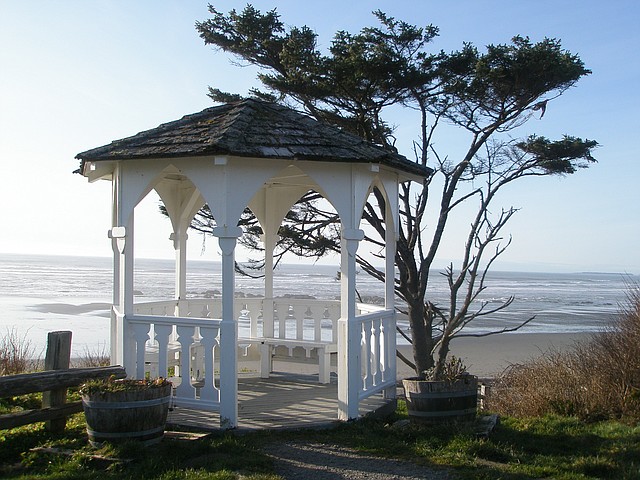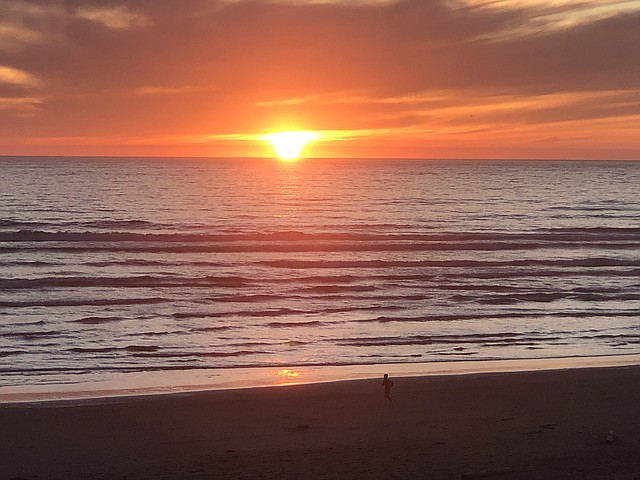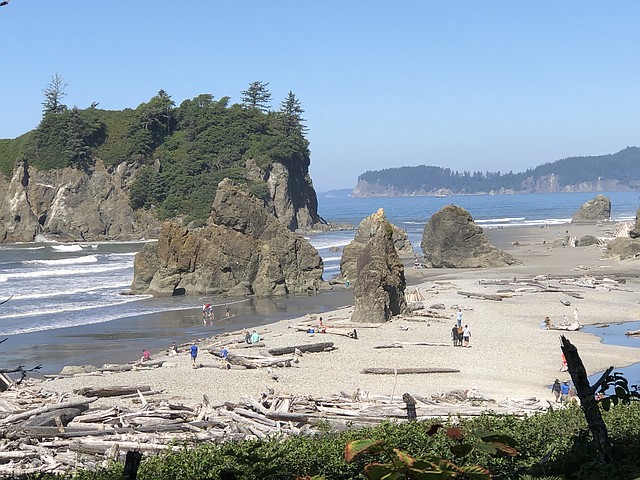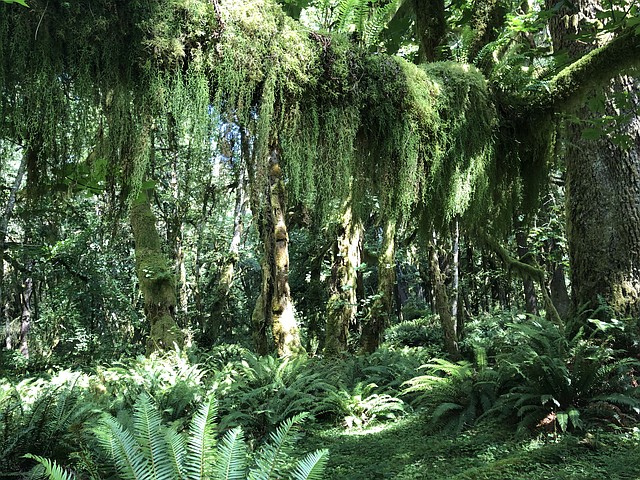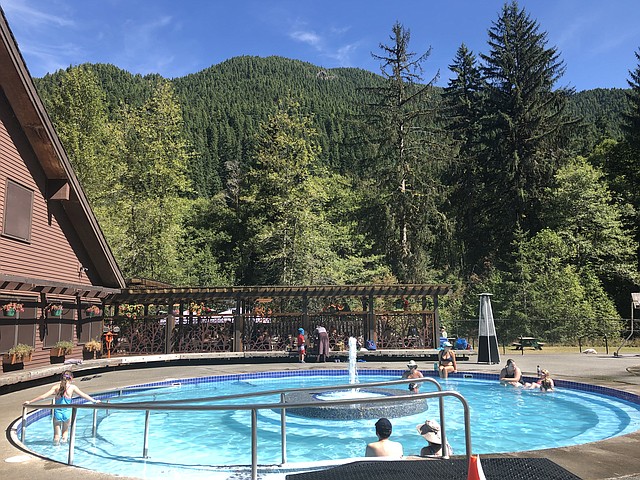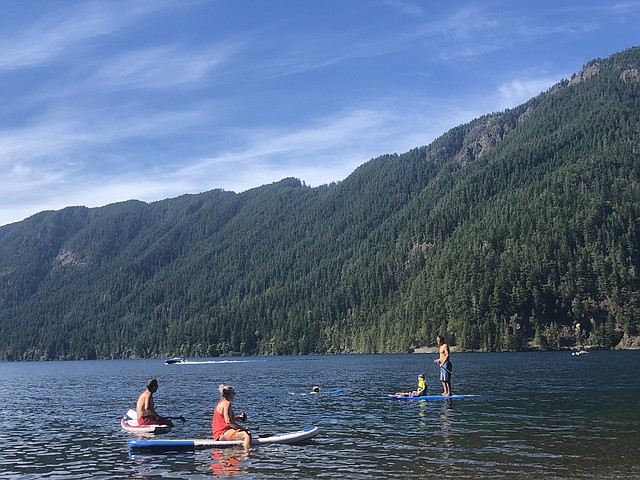Find inspiration in the natural splendor of Olympic National Park
July 1, 2020 at 6:00 a.m.
Diversity is the hallmark of Olympic National Park. Located in northwestern Washington State, on the Olympic Peninsula, the park protects a wilderness spanning nearly a million acres. It is often referred to as “three parks in one,” as it boasts three distinctly different ecosystems: rugged, glacier-capped peaks, old-growth and temperate rain forests and over seventy miles of wild Pacific coastline.
President Roosevelt established Olympic National Park in 1938 and in 1988, nearly ninety-six percent of the area was designated as wilderness. Much of the park’s interior is accessible only by trail, but there are several scenic drives and spur roads that lead to various key destinations.
At the southwest end of the park is the Quinault Valley, known as the “Valley of the Giants.” It’s home to the largest Sitka Spruce tree in the world, along with massive Hemlock, Douglas Fir and the mighty Western Red Cedar. Within the valley is the Quinault Rain Forest, one of three temperate coniferous rainforests in the Western Hemisphere. It receives an average of twelve feet of rain per year, which is responsible for nourishing this complex temperate ecosystem. Make sure to take your waterproof gear no matter when you visit.
Hiking is plentiful in this area with fifteen well-established trails. Dripping, moss-draped bigleaf maples create a mystical and primordial scene. Keep your eye out for the stately Roosevelt Elk and the Black Tail Deer, or the elusive cougar. Up to 600 elk live in the Quinault Valley so your chances are good to spot one or two.
If you are unable to stay at the historic Lake Quinault Lodge, make sure to stop in for a peek, a meal or to rent one of the boats to take out on the lake. This handsome timber structure, which dates back to 1926, sits on the banks of a majestic glacier-carved body of water. Lake Quinault is a natural lake formed by a glacier that receded into the mountains many thousands of years ago. Meander the trail that goes along the lake for easy-on-the eyes views.
The lodge has a number of different style rooms (some which are pet-friendly), a cozy lobby, spacious outdoor veranda, indoor swimming pool, game room and the well-known Roosevelt Dining Room with its spectacular view of the lake. This restaurant shines, particularly at dinner, when guests are treated to a variety of tasty regional specialties, with seafood the main attraction. There’s also a general store conveniently located across the street that sells everything you need for a picnic lunch.
People tend to congregate in the lodge’s lobby during the late afternoon and evening hours. They read, play board games, plan their next day’s hikes or doze off in front of the crackling fireplace. It’s a scene right out of a Currier & Ives picture.
To learn about the fascinating history of the Lake Quinault area, visit the Lake Quinault Museum, which is right across the road from the lodge. Artifacts, photos and written materials reflect many aspects of native and pioneering life. Prominent in the collection are native dugout canoes and basketry, written pioneer histories and early-day educational materials.
Continue your journey back in time with a walk along the Kestner Homestead trail. You’ll find remnants of the original Kestner Homestead of 1891, as well as those of the Higley family, who purchased the farm in 1946. Today, this historic area, occupied by families for nearly 100 years, is being restored to exemplify life on a settler-built homestead in the Quinault Valley.
To experience a totally different environment, head twenty odd miles north to Kalaloch on the scenic coast off U.S. 101. The lodge and its cabins are perched on a bluff above the ocean, where you’ll go to bed at night lulled to sleep by the sound of the waves outside your door. In the morning, grab your cup of coffee and stroll right down the path to the beach. You can walk for what seems like forever along this picturesque coastline.
Over the years, large logs and driftwood have piled up against the bluff, creating numerous ideal spots to sit and breathe the salty air while contemplating this exquisite landscape. Sunrises and sunsets are especially poetic moments with scenes that rival Impressionist paintings. And the tide pools that form provide a fascinating glimpse of the diversity of marine life that lies beneath the surface of the sea. If you’re lucky, you’ll see a whale or two breaching and maybe a sea lion sunning itself on the rocks. I guarantee you’ll spot a few bald eagles soaring above.
At Kalaloch, the focus is the beach. And people choose to stay at the lodge because of its lack of pretense. The charm of this property lies in its simplicity and naturalness. You’ll find rustic comfort in the comfy cabins, several of which come with kitchenettes and fireplaces. And in each, you’ll find a beach guide, tide tables and a pair of walking sticks. What you won’t see are any in-room TVs or telephones. In an effort to provide a true escape, these “distractions” are purposefully absent.
From Kalaloch, it’s another twenty miles to the Hoh Rainforest, a mecca for hikers. On your way, stop at Ruby Beach to see the dramatic sea stacks. Known as “ghosts of former islands,” these mammoth rocks are actually remnants of eroded cliffs that loom out of the water and appear as sentinels of the coastline. The beach got its name for its often garnet-colored sand.
Once you’re in the Hoh, stop at the visitor center to learn a bit about the area and get trail advice from the helpful rangers. For a quick and easy introduction to this unique ecosystem, take the Hall of Mosses path. It’s a short three-fourth mile loop that will lead you into the older part of the forest. The primeval spirit is strong among these colossal trees that seem as old as the earth. Moss hangs like beards off their shaggy branches and the light plays peek-a-boo in the leafy canopy overhead.
Then head out on the Hoh River Trail to explore more of this verdant paradise. You’ll meander past waterfalls and creeks as you follow the sometimes teal, sometimes grey river. And in the distance, you’ll see the snowcapped peaks of the Olympics.
The Hoh Valley is known as one of the wettest places in the country with an average 140 inches of annual rainfall, so you’re bound to get some liquid sunshine. Even if the rain gods are absent during your visit, you’ll always feel a condensed mist in the rain forest. It just adds to the mysterious and eerie quality of this distinctive setting.
Continue on your journey to Sol Duc, where you can hike to the Sol Duc Falls overlook, climb to Mink Lake or do the Lover’s Lane loop. In fall, the Salmon Cascades overlook attracts visitors, who come to view Coho salmon leap over the falls on their way to spawn upstream in the Sol Duc River. When you’re ready to relax, head to Sol Duc Hot Springs Resort and soak in the soothing mineral pools.
Another scenic spot is Lake Crescent. The pristine waters of this deep, glacially carved lake are so clear you can see as far down as sixty feet in places. This clarity and reflecting light give Lake Crescent its stunning blue-green color. You can rent boats, take a swim or simply laze on the beach. There are also hiking trails, some of which climb the surrounding mountains, while others explore the lowland forests and creeks. The hike to Marymere Falls is a favorite, as is the Spruce Railroad path that runs along the north shore.
Lake Crescent Lodge makes an ideal base for enjoying this section of the park while experiencing the charm of a turn-of-the-century resort. The guest rooms and cabins are nestled among the giant fir and hemlock trees on the shores of the lake. The antique-decorated lobby offers a yester-year ambiance, and the stone fireplace is an ideal spot to unwind. Or, take in one of the colorful sunsets from the sun porch.
At the northeast corner of the park is Hurricane Ridge. At 5,242 feet, nearly a mile high, the ridge is accessed via a winding road. Once at the top, there are trails that allow you to capture views of jagged mountains and a vast expanse of wilderness. Hurricane Hill is a popular hike with a rewarding panorama of Port Angeles and the Strait of Juan de Fuca. Other moderate trails include the Cirque Rim, Big Meadow and High Ridge. If you hear a high-pitched whistle during your trek, know it’s the Olympic marmot announcing its presence. These creatures are endemic to the Olympic Peninsula, meaning they are found nowhere else in the world.
There is so much to experience within Olympic National Park. Like fine chocolate, it’s best appreciated and savored in small pieces.
If you go: Olympic National Park information: www.nps.gov/olym
Debbie Stone is an established travel writer and columnist, who crosses the globe in search of unique destinations and experiences to share with her readers and listeners. She’s an avid explorer who welcomes new opportunities to increase awareness and enthusiasm for places, culture, food, history, nature, outdoor adventure, wellness and more. Her travels have taken her to nearly 100 countries spanning all seven continents, and her stories appear in numerous print and digital publications.
